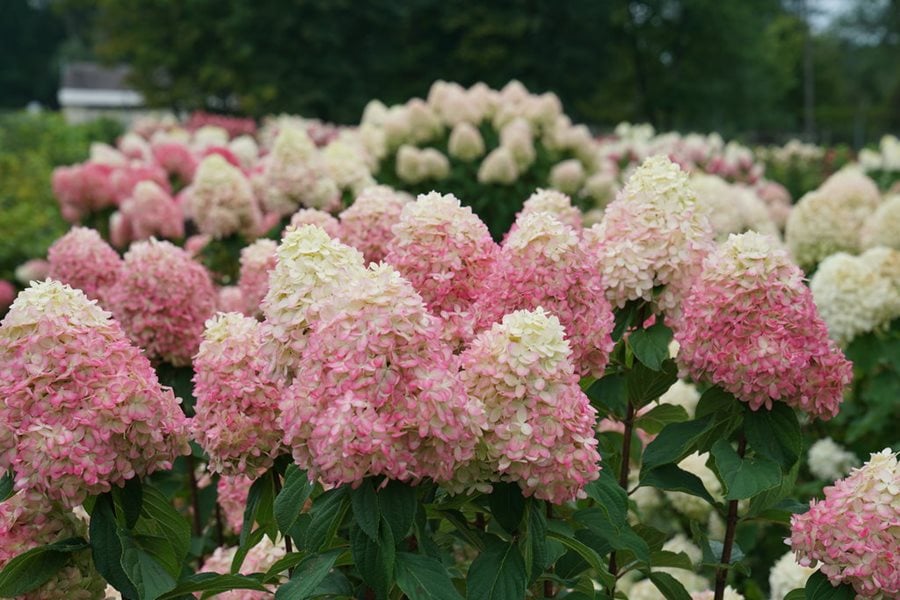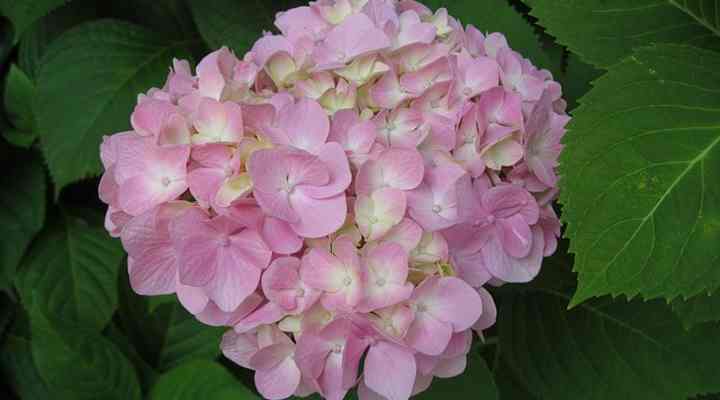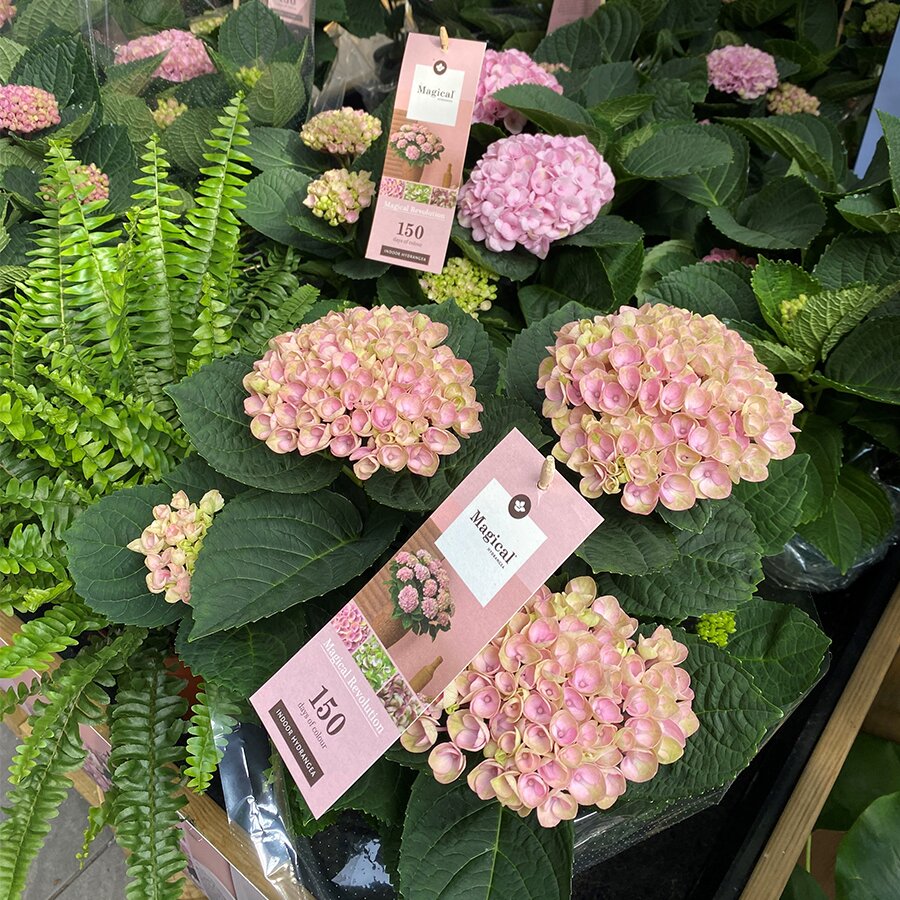The Pale Pink Hydrangea: A Sweet And Subtle Summer Bloom
The pale pink hydrangea is a sweet and subtle summer bloom that adds a touch of elegance to any garden. With its large, cascading clusters of flowers, it is a popular choice for both home gardeners and landscape designers.
Introduction
The pale pink hydrangea (Hydrangea macrophylla 'Nikko Blue') is a deciduous shrub that is native to Japan. It grows to a height of 6-8 feet and has a spreading habit. The leaves are dark green and oval-shaped. The flowers are borne in large, conical clusters that can reach up to 12 inches in diameter. The flowers start out as a pale pink color, but they will gradually fade to white as they mature.
Main Content
The pale pink hydrangea is a relatively easy plant to care for. It prefers full sun to partial shade and moist, well-drained soil. It is important to water the plant regularly, especially during the hot summer months. The plant will benefit from a light application of fertilizer in the spring.
The pale pink hydrangea is a relatively hardy plant that can withstand cold winters. However, it is important to protect the plant from harsh winds and frost. In colder climates, the plant may need to be covered with a burlap sack or other protective material during the winter months.
The pale pink hydrangea is a relatively long-lived plant that can provide years of enjoyment. With proper care, it can reach a mature age of 30-40 years.
Here are some additional tips for growing pale pink hydrangeas:
- Plant your hydrangea in an area that receives full sun to partial shade.
- Water your hydrangea regularly, especially during the hot summer months.
- Fertilize your hydrangea with a balanced fertilizer in the spring.
- Protect your hydrangea from harsh winds and frost in colder climates.
- Deadhead spent flowers to encourage new blooms.
- Prune your hydrangea in the spring to shape the plant and remove dead or damaged wood.
Conclusion
The pale pink hydrangea is a beautiful and easy-to-care-for plant that is perfect for adding a touch of elegance to any garden. With its large, cascading clusters of pale pink flowers, it is sure to be a showstopper in your garden.
Pale pink hydrangeas are a beautiful addition to any garden. Their delicate blooms are sure to add a touch of elegance to any landscape. If you're thinking about adding a pale pink hydrangea to your garden, I recommend visiting . This website has a wealth of information about pale pink hydrangeas, including different varieties, planting tips, and care instructions. You can also find beautiful photos of pale pink hydrangeas in bloom.
is a great resource for anyone who loves hydrangeas. The website is well-organized and easy to navigate. The information is accurate and up-to-date. And the photos are simply stunning. If you're looking for more information about pale pink hydrangeas, I highly recommend visiting .
FAQ of pale pink hydrangea
- What makes hydrangeas turn pink?
The acidity of the soil is what determines the color of hydrangea flowers. In alkaline soil (pH above 7), flowers turn pink or even red. In acidic soil (pH below 5.5), flowers turn blue or purple. You can change the color of your hydrangeas by adjusting the pH of the soil.
- Why are my hydrangea flowers turning green?
Hydrangeas turn green because of age. Eventually, the flower will turn from green to brown and is a normal process. However, if your hydrangeas are turning green prematurely, it could be a sign of nutrient deficiency or stress.
- How do I care for a pale pink hydrangea?
Pale pink hydrangeas are relatively easy to care for. They need full sun to partial shade and well-drained soil. Water them regularly, especially during hot, dry weather. Fertilize them once a year in the spring with a balanced fertilizer.
- How do I propagate a pale pink hydrangea?
Pale pink hydrangeas can be propagated by division or by cuttings. To divide a hydrangea, dig up the plant in the fall or early spring and divide it into several sections. Each section should have at least a few roots and shoots. Plant the divisions in a new location and water them well. To propagate a hydrangea by cuttings, take 6-8 inch cuttings from the plant in the spring or summer. Remove the bottom leaves from the cuttings and dip them in rooting hormone. Plant the cuttings in a well-drained potting mix and keep them moist. The cuttings should root in 4-6 weeks.
- What are some pests and diseases that affect pale pink hydrangeas?
Pale pink hydrangeas are susceptible to a few pests and diseases, including aphids, spider mites, powdery mildew, and leaf spot. Aphids and spider mites can be controlled with insecticidal soap or neem oil. Powdery mildew can be treated with a fungicide. Leaf spot can be prevented by watering the plant at the base and avoiding overhead watering.
Image of pale pink hydrangea
5 different images of pale pink hydrangea from Pinterest:
- A pale pink hydrangea bush in full bloom, with its flowers cascading down over the sides of the bush.

- A close-up of a single pale pink hydrangea flower, showing its delicate petals and intricate stamen.

- A pale pink hydrangea flower in a vase, surrounded by other flowers in shades of white, blue, and purple.

- A pale pink hydrangea trellis, covered in flowers that are just starting to bloom.

- A pale pink hydrangea tree, its branches laden with flowers that are in various stages of bloom.

Post a Comment for "The Pale Pink Hydrangea: A Sweet And Subtle Summer Bloom"